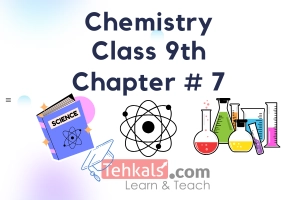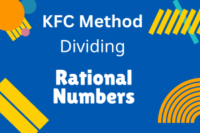Chemistry Class 9 Chapter 8
Published: 4 Nov 2023
Chemistry Class 9 Chapter 8 is about “Chemical Reactivity”. This article includes the MCQs of Chemistry class 9th chapter 8.
Chemistry Class 9 Chapter 8 Notes
Chemical Reactivity Notes
MCQs of Chemistry Class 9th Chapter 8
1. The Science of Chemistry revolves around Chemical_______________.(a) Reaction
(b) Properties
(c) Compounds
Show Answer
Reaction
2. Which metal is placed in air and catches fire ?
(a) Lithium
(b) Sodium
(c) Potassium
Show Answer
Sodium
3. Metals are those substances which are ____________ of heat and electricity.
(a) Insulator
(b) Bad Conductor
(c) Good Conductor
Show Answer
Good Conductor
4. Which of the following is the characteristic property of metal?
(a) Malleable
(b) Ductile
(c) Lustra’s
(d) All of them
Show Answer
All of them
5. The Oxides and Hydroxides of metals are ___________.
(a) Bases
(b) Salts
(c) Acids
Show Answer
All of them
To Download Complete Notes of Chemistry Notes 9 Class, Click on the given link.
6. All of the metals Except _____ exist in solid state at room temperature.(a) Tin
(b) Mercury
(c) Lead
(d) Sliver
Show Answer
Mercury
7. When oxide of metal is dissolved in water, it forms an _______ solution and turns red litmus paper blue.
(a) Alkaline
(b) Salty
(c) Acidic
Show Answer
Alkaline
8. A metal is an element which ______ electron and forms cation
(a) Gains
(b) Shares
(c) Loses
Show Answer
Loses
9. Which of the following element lose an electron and forms a caution?
(a) Chlorine
(b) Sodium
(c) Bromine
Show Answer
Sodium
10. All three metals are _______ in nature.
(a) Electropositive
(b) Electronegative
(c) Liquid
Show Answer
11. In Group 1 of periodic table all are metals except
(a) Hydrogen
(b) Francium
(c) Sodium
Show Answer
Hydrogen
12. The Group 2 of periodic table is composed of
(a) Non-Metals
(b) Metalloids
(c) metals
Show Answer
metals
13. Group 3 of periodic table is all composed of metals except
(a) Boron
(b) Indium
(c) Gallium
Show Answer
Boron
14. In Group 4 of periodic table
(a) All metals
(b) Tin and lead
(c) All non-metal
Show Answer
Tin and lead
15. Which of the following are metals in group 5?
(a) Antimony
(b) Bismuth
(c) Nitrogen
(d) Both (a) & (b)
Show Answer
Both (a) & (b)
16. All the members of group 6 in periodic table is _____
(a) Non-metals
(b) Metalloids
(c) metals
(d)
Show Answer
Non-metals
17. All the members of group of 7 in periodic tables is ________
(a) Non-metals
(b) Metalloids
(c) metals
Show Answer
Non-metals
18. All the elements present in D-Block of periodic table are
(a) Non-metals
(b) Metalloids
(c) metals
Show Answer
metals
19. All the elements present in lanthanide and actinide series are _____
(a) Non-metals
(b) Metalloids
(c) metals
Show Answer
metals
20. The tendency of an element to lose electrons and form cations is called _____ character.
(a) Electronegative
(b) Electropositive
(c) sublimation
Show Answer
Electropositive
21. A more electropositive element has _____ metallic character.
(a) More
(b) Constant
(c) less
Show Answer
More
22. $ Na \quad \longrightarrow Na^+ + $ ________.
(a) $ 4es^- $
(b) $ 3es^- $
(c) $ 2es^- $
(d) $ 1e^- $
Show Answer
$ 1e^- $
23. $ Ca \quad \longrightarrow Ca^{+2} + $ ___________.
(a) $ 4es^- $
(b) $ 3es^- $
(c) $ 2es^- $
(d) $ 1e^- $
Show Answer
$ 2es^- $
24. The elements having lower ____________ have higher electro positivity.
(a) Ionization energy
(b) Electron affinity
(c) Electro negativity
Show Answer
Ionization energy
25. Which metals are most electropositive in nature?
(a) Halogens
(b) Alkaline earth metals
(c) Alkali metals
Show Answer
Alkali metals
26. Non-Metals have the ability to _____ electrons in their valance shall to form anions.
(a) Accept
(b) Share
(c) donate
Show Answer
Accept
27. $ F + $ ____________ $ \quad \longrightarrow F^- $
(a) $ 1e^- $
(b) $ 2es^- $
(c) $ 3es^- $
(d) $ 4es^- $
Show Answer
$ 1e^- $
28. $ O + $ ________ $ \quad \longrightarrow O^{-2} $
(a) $ 1e^- $
(b) $ 2es^- $
(c) $ 3es^- $
(d) $ 4es^- $
Show Answer
$ 2es^- $
29. Metallic character decreases across a period from _______.
(a) Right to left
(b) Top to bottom
(c) Left to right
Show Answer
Left to right
30. Non-metallic character increases with increases in _______ across a period.
(a) Atomic number
(b) Mass number
(c) Molarity
Show Answer
Atomic number
31. In a group from top to bottom the metallic character
(a) Decreases
(b) Increases
(c) Constant
Show Answer
Increases
32. The elements of group IA except hydrogen are ______.
(a) alkali metals
(b) Alkaline earth metals
(c) Halogens
Show Answer
alkali metals
33. The word alkali is an Arabic word which means. _________
(a) Rock Dangerous
(c) Ashes
Show Answer
Ashes
34. How many electrons does alkali meal have in their valence shall ?
(a) $ 4es^- $
(b) $ 3es^- $
(c) $ 2es^- $
(d) $ 1e^- $
Show Answer
$ 1e^- $
35. The alkali metals are highly _________ elements
(a) Electronegative
(b) Electropositive
(c) Coordinative
Show Answer
Electropositive
36. Alkali metals lose their one valance electron and form ________ ions.
(a) Mono positive
(b) Bi positive
(c) Tri positive
Show Answer
Mono positive
37. The ionization energy of alkali metals are ____
(a) High
(b) Moderate
(c) low
Show Answer
low
38. Alkali metals form ______ compounds with group VI, VII
(a) Covalent
(b) ionic
(c) Metallic
Show Answer
ionic
39. Alkali metals are very reactive, that is why they do not occur in _____ state.
(a) Free
(b) Combine
(c) molecular
Show Answer
Free
40 Sodium and potassium are abundantly ____ found on the earth crust.
(a) $ 4.2 $ %
(b) $ 2.4 $ %
(c) $ 1.24 $ %
Show Answer
$ 2.4 \% $
41. Which element is not found in nature rather prepared in the laboratory?
(a) Sodium
(b) Lithium
(c) Francium
Show Answer
Francium
42. The elements of group II A are called ________ metals.
(a) Alkaline earth
(b) Alkali
(c) noble
Show Answer
Alkaline earth
43. The alkaline earth metals have ______ electrons in their valance shall
(a) 1
(b) 2
(c) 3
(d) 4
Show Answer
2
44. Alkaline earth metals are _______ in nature
(a) Electropositive
(b) Fundamental
(c) electronegative
Show Answer
Electropositive
45. Alkaline earth metals lose two valance electrons and form _____ ions.
(a) $ M^{+4} $
(b) $ M^{+3} $
(c) $ M^{+2} $
(d) $ M^{+1} $
Show Answer
$ M^{+2} $
46. There are _____ alkaline earth metals.
(a) 5
(b) 6
(c) 4
(d) 8
Show Answer
6
47. Alkaline earth metals are found in the form of _________
(a) Sulphates
(b) Carbonates
(c) Nitrates
Show Answer
Sulphates
48. _______ occurs in nature in small amount in the form of Beryl.
(a) Calcium
(b) Magnesium
(c) Beryllium
Show Answer
Beryllium
49. Magnesium halides are found in _______
(a) Rocks
(b) Sea Water
(c) Mud
Show Answer
Sea Water
50. Calcium occurs as skeletal material in _________
(a) Bones
(b) Teeth
(c) Egg Shell
(d) All of them
Show Answer
All of them
51. Which element has highest ionization energy?
(a) Lithium
(b) Sodium
(c) Potassium
(d) Rubidium
Show Answer
Lithium
52. Moving from alkali to alkaline earth metals, the melting and boiling points, densities and hardness _______.
(a) Increases
(b) Constant
(c) Decreases
Show Answer
Increases
53. Sodium does not occur in _____ state in nature because it is too reactive and readily combines with other elements.
(a) Combined
(b) Molecular
(c) Free
(d) None of these
Show Answer
Free
54. Sodium is found in sea as ____________
(a) Na CI
(b) NaBr
(c) NaI
(d) All of them
Show Answer
All of them
55. When freshly cut, alkali metals shows as shiny and _______ surface that rapidly tarnishes in air.
(a) Reddish
(b) Silvery
(c) Neon Green
Show Answer
Silvery
56. Sodium atom belongs to _________.
(a) Group I
(b) Group II
(c) Group III
Show Answer
Group I
57. The atomic number of sodium is _____ and its symbol is “Na”
(a) 17
(b) 11
(c) 21
(d) 29
Show Answer
11
58. Sodium element is a ________ metal.
(a) Hard
(b) Wax like
(c) soft
Show Answer
soft
59. The melting point of sodium is ________
(a) $ 97.6 {}^oC $
(b) $ 69.7{}^oC $
(c) $ 76.9 {}^oC $
Show Answer
$ 97.6 {}^oC $
60 The boiling point of Sodium is
(a) $ 880 {}^oC $
(b) $ 900 {}^oC $
(c) $ 920 {}^oC $
Show Answer
$ 880 {}^oC $
61 Sodium is a _______ conductor of heat and electricity.
(a) Bad
(b) Good
(c) Both
Show Answer
Good
62. Sodium carbonate, sodium bicarbonate, sodium hydroxide and sodamide etc. can be prepared with the help of _______.
(a) Potassium
(b) Silver
(c) Sodium
Show Answer
Sodium
63. Sodium form alloy with mercury called _______.
(a) Sodium amalgam
(b) Mercurous sodium
(c) Botanical liquid
Show Answer
Sodium amalgam
64. Magnesium is the member of ______ metals.
(a) Alkali
(b) Alkaline
(c) Halogens
Show Answer
Alkaline
65. The dolomite, kieserite and Epsom salt are the combined forms of ________.
(a) Beryllium
(b) Calcium
(c) Magnesium
Show Answer
Magnesium
66. Magnesium is present in sea water as _________.
(a) Chlorides
(b) Bromides
(c) Silicates
(d) Both a and b
Show Answer
Both a and b
67. Magnesium is responsible for permanent _______ of water.
(a) Hardness
(b) Ionization
(c) Stability
Show Answer
Hardness
68. Magnesium is essential constituent of ________ in plants.
(a) Xylem
(b) Mesophyll
(c) Chlorophyll
Show Answer
Chlorophyll
69. The atomic number of magnesium is ________.
(a) 16
(b) 12
(c) 18
(d) 24
Show Answer
70. Magnesium occupy _______ electronic shells.
(a) 3
(b) 4
(c) 5
(d) 6
Show Answer
3
71. Magnesium has a silvery grey ________ appearance.
(a) Gaseous
(b) Solid
(c) Liquid
Show Answer
Solid
72. Magnesium has a melting point of ________.
(a) $ 651 {}^oC $
(b) $ 156 {}^oC $
(c) $ 561 {}^oC $
Show Answer
$ 651 {}^oC $
73. The boiling point of Magnesium is ________
(a) $ 210 {}^6oC $
(b) $ 1062 {}^oC $
(c) $ 1106 {}^oC $
Show Answer
$ 1106 {}^oC $
74. Magnesium has __________ characteristics.
(a) Malleable
(b) Ductile
(c) Good Conductor
(d) All of them
Show Answer
All of them
75. The main ingredient in calcium carbonate, lime stone, marble etc is _______.
(a) Calcium
(b) Sulphur
(c) Silver
Show Answer
Calcium
76. The atomic number of calcium is ________.
(a) 05
(b) 10
(c) 15
(d) 20
Show Answer
77. Calcium has ________ valance electrons.
(a) 2
(b) 4
(c) 6
(d) 8
Show Answer
2
78. The melting point of calcium is ______.
(a) $ 158 {}^oC $
(b) $ 851 {}^oC $
(c) $ 518 {}^oC $
Show Answer
$ 851 {}^oC $
79. The boiling point of calcium is ______.
(a) $ 1487 {}^oC $
(b) $ 1484 {}^oC $
(c) $ 1490 {}^oC $
(d) $ 1493 {}^oC $
Show Answer
$ 1487 {}^oC $
80. _______ is a mixture of Aluminum, copper, magnesium and manganese.
(a) Magnesium
(b) Duralumin
(c) Amalgam
Show Answer
Duralumin
81. The metals present in group I and II are _______, very reactive, very electropositive is called soft metals.
(a) Soft
(b) Hard
(c) Wax like
Show Answer
Soft
82. Iron is a transition element, with atomic number ______.
(a) 56
(b) 26
(c) 46
(d) 36
Show Answer
26
83. _________. Metals are those metals which resists oxidation and corrosion in moist air.
(a) Carbon family
(b) Lanthanide
(c) Noble
Show Answer
Noble
84. Noble metals are relatively inert and found _______ in nature.
(a) Free
(b) Combined
(c) Complex
Show Answer
Free
85. ________ is used to make ornamental objects and jeweler for thousands of years.
(a) Lithium
(b) Bronze
(c) Gold
(d) Aluminum
Show Answer
Gold
86. We alloy gold with other metals such as ________.
(a) Copper
(b) Silver
(c) Platinum
(d) All of them
Show Answer
All of them
87. ________ are those substances which are non-conductors of heat and electricity.
(a) Metals
(b) Non-metals
(c) Metalloids
(d)
Show Answer
Non-metals
88. The oxides and hydroxides of non-metals are _______.
(a) Acids
(b) Bases
(c) Salts
Show Answer
Acids
89. Non-metals exists in ______ states of matter at room temperature.
(a) 1
(b) 2
(c) 3
(d) 4
Show Answer
3
90. Non metal is an element which gains an electron and form _______.
(a) Anion
(b) Cation
(c) Radical
Show Answer
Anion
91. All non-metallic elements have the ability to gain electrons from other elements, hence they are ______ in nature.
(a) Electronegative
(b) Electropositive
(c) Allotropic
Show Answer
Electronegative
92. Group VIII elements are called _______.
(a) Noble gases
(b) Halogens
(c) Carbon family
Show Answer
Halogens
93. The word halogen is derived from a Greek word which means ________.
(a) Salt forming
(b) Burning
(c) Ashes
Show Answer
Salt forming
94. Halogens are ________.
(a) Metals
(b) Metalloids
(c) Non-Metals
Show Answer
Non-Metals
95. At room temperature, fluorine and chlorine are ______
(a) Gases
(b) Liquid
(c) Solid
(d) Plasma
Show Answer
Gases
96. Bromine is a __________.
(a) Gas
(b) Liquid
(c) Solid
Show Answer
Liquid
97. Iodine and astatine are _________.
(a) Gases
(b) Liquids
(c) Solids
Show Answer
Solids
98. A reaction in which more reactive halogen will displace a less reactive halogen from its halide solution is called ________ reaction.
(a) Displacement
(b) Oxidation
(c) Reduction
Show Answer
Displacement
99. Bromine is a non-metal in:
(a) Solid State
(b) Liquid State
(c) Gaseous State
(d) Plasma State
Show Answer
Liquid State
100. Halogens react with metals to form:
(a) Halides
(b) Oxides
(c) Halogen sapphires
(d) Hydrogenated compounds
Show Answer
Halides
101. Alkali metals are:
(a) Oxidizing agents
(b) Dehydrating agents
(c) Reducing agents
(d) All the them
Show Answer
Oxidizing agents
102. Among the alkali metals, the metal with the highest ionization potential is:
(a) Na
(b) Li
(c) Rb
(d) Cs
Show Answer
Li
103. The halogen present in the solid form is:
(a) Chlorine
(b) Fluorine
(c) Iodine
(d) Bromine
Show Answer
Iodine
104. Tendency of a metal to lose electron is called:
(a) Electronegativity
(b) Electro positivity
(c) Electroplating
(d) Electrolysis
Show Answer
Electro positivity
105. The word alkali means:
(a) Base
(b) Basic salt
(c) Acid
(d) Ashes
Show Answer
Ashes
106. The oxide of calcium CaO is:
(a) Acidic
(b) Basic
(c) Amphoteric
(d) Neutral
Show Answer
Basic
107. Which of the following is not an alkali metal:
(a) Francium
(b) Cesium
(c) Rubidium
(d) Radium
Show Answer
Radium
108. Group II elements are named as Alkaline Earth Metals because:
(a) Their Oxides are basic
(b) Their oxide and hydroxides are water soluble
(c) Both A and B
(d) They are found in earth
Show Answer
They are found in earth
Review Exercise Chapter 8
96. Bromine is a __________.(a) Gas
(b) Liquid
(c) Solid
Show Answer
Liquid
97. Iodine and astatine are _________.
(a) Gases
(b) Liquids
(c) Solids
Show Answer
Solids
98. A reaction in which more reactive halogen will displace a less reactive halogen from its halide solution is called ________ reaction.
(a) Displacement
(b) Oxidation
(c) Reduction
Show Answer
Displacement
99. Bromine is a non-metal in:
(a) Solid State
(b) Liquid State
(c) Gaseous State
(d) Plasma State
Show Answer
Liquid State
100. Halogens react with metals to form:
(a) Halides
(b) Oxides
(c) Halogen sapphires
(d) Hydrogenated compounds
Show Answer
Halides
101. Alkali metals are:
(a) Oxidizing agents
(b) Dehydrating agents
(c) Reducing agents
(d) All the them
Show Answer
Oxidizing agents
102. Among the alkali metals, the metal with the highest ionization potential is:
(a) Na
(b) Li
(c) Rb
(d) Cs
Show Answer
Li
103. The halogen present in the solid form is:
(a) Chlorine
(b) Fluorine
(c) Iodine
(d) Bromine
Show Answer
Iodine
104. Tendency of a metal to lose electron is called:
(a) Electronegativity
(b) Electro positivity
(c) Electroplating
(d) Electrolysis
Show Answer
Electro positivity
105. The word alkali means:
(a) Base
(b) Basic salt
(c) Acid
(d) Ashes
Show Answer
Ashes
106. The oxide of calcium CaO is:
(a) Acidic
(b) Basic
(c) Amphoteric
(d) Neutral
Show Answer
Basic
107. Which of the following is not an alkali metal:
(a) Francium
(b) Cesium
(c) Rubidium
(d) Radium
Show Answer
Radium
108. Group II elements are named as Alkaline Earth Metals because:
(a) Their Oxides are basic
(b) Their oxide and hydroxides are water soluble
(c) Both A and B
(d) They are found in earth
Show Answer
They are found in earth
Chemistry Class 9 MCQs (All Chapters)

- Be Respectful
- Stay Relevant
- Stay Positive
- True Feedback
- Encourage Discussion
- Avoid Spamming
- No Fake News
- Don't Copy-Paste
- No Personal Attacks



- Be Respectful
- Stay Relevant
- Stay Positive
- True Feedback
- Encourage Discussion
- Avoid Spamming
- No Fake News
- Don't Copy-Paste
- No Personal Attacks





